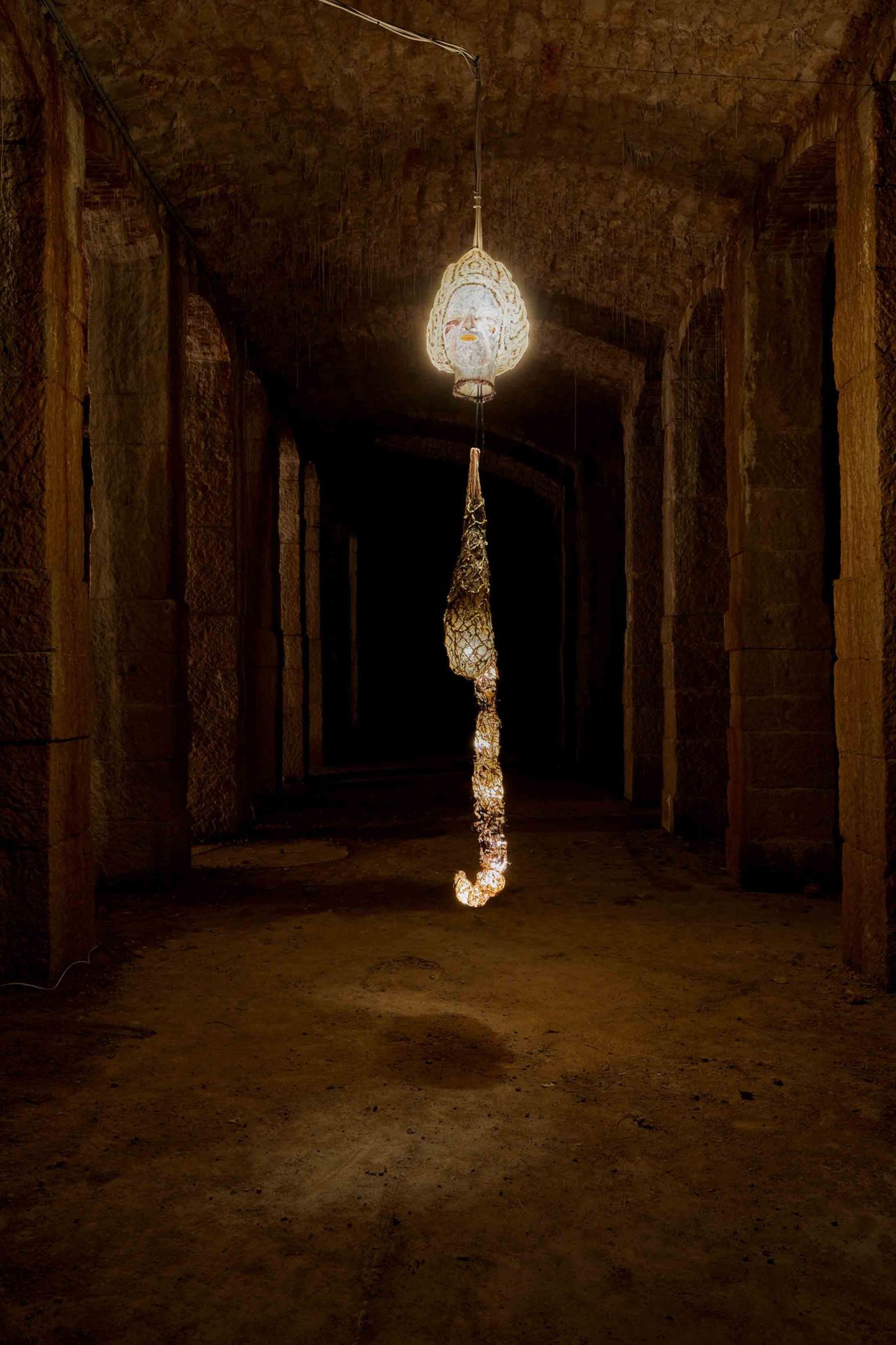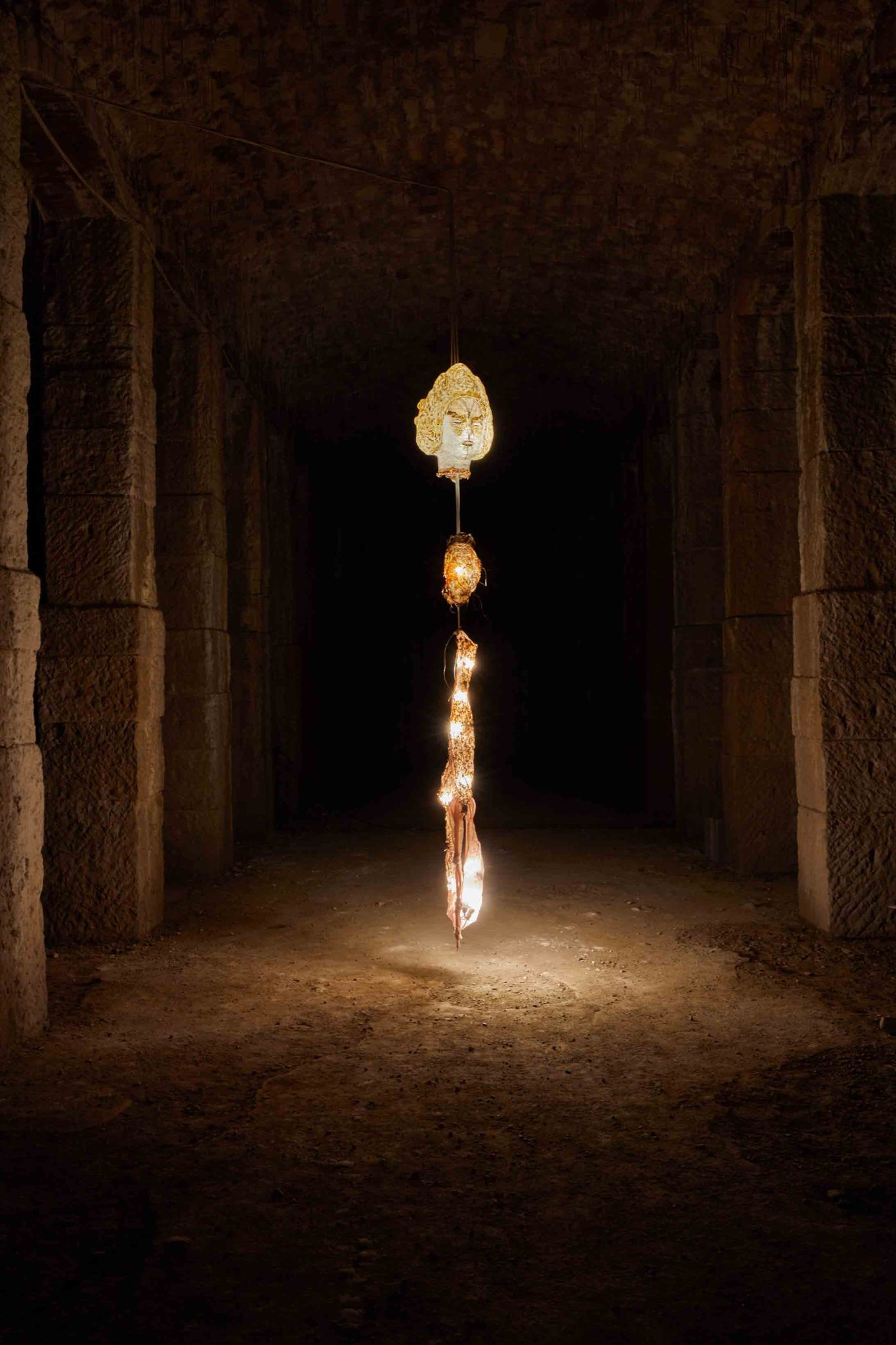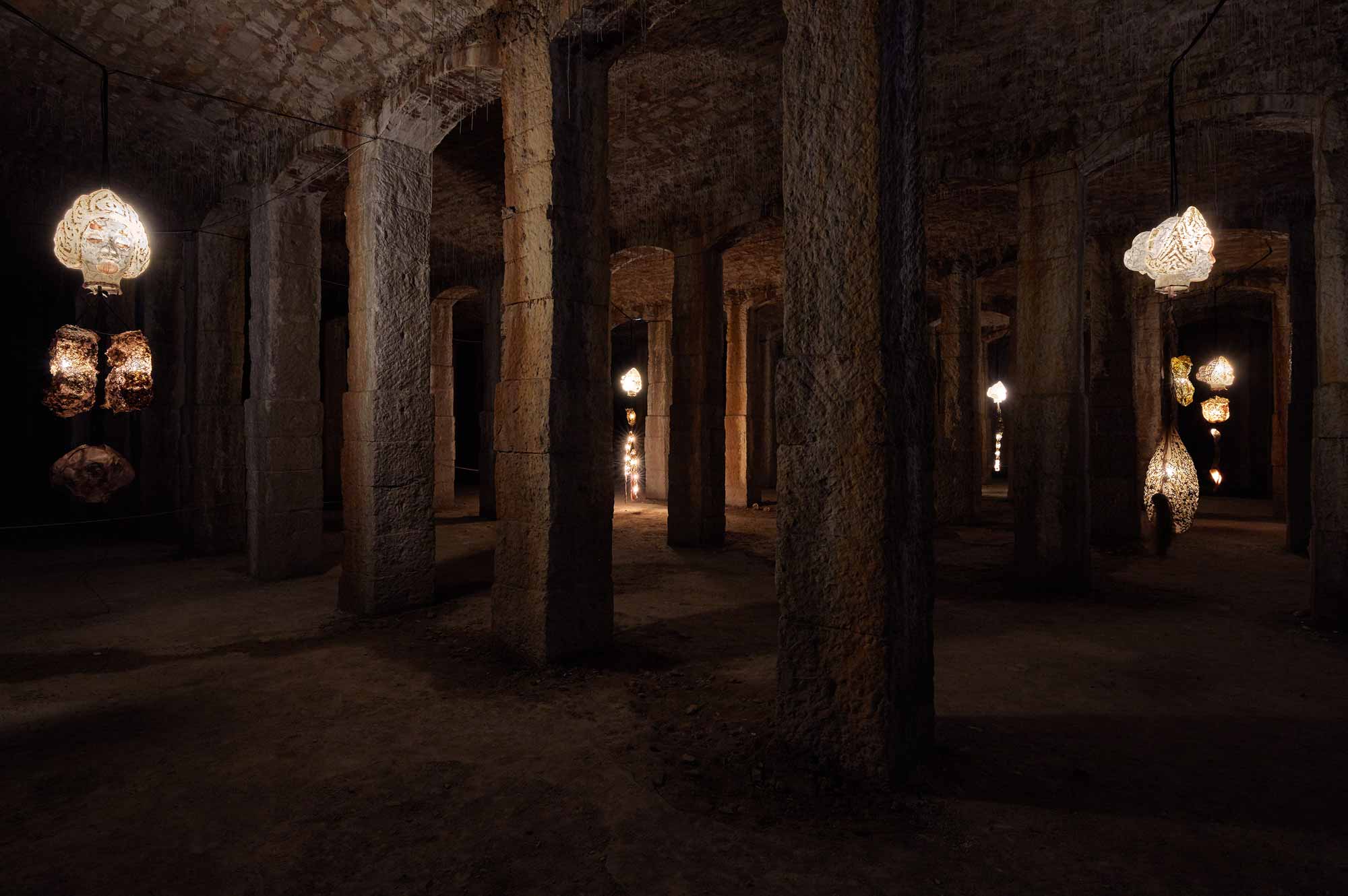Amy Lien (b. 1987, US) and Enzo Camacho (b. 1985, PH) have a collaborative artistic practice that moves from the Philippines outwards to other places, addressing localised iterations of labour and capital from the perspective of post-colonial damage. Their projects often involve an immersive period of research or living within a locale, during which they try to identify particular points of tension that speak to the manipulation of life in the service of profit and development. The artworks that emerge out of this experiential research are formed through playful experiments with modest materials (such as light, paper, strings, and sticks), which foreground an aesthetics of sustainable learning.
Amy Lien & Enzo Camacho, waves move bile, 2020
Mixed media installation, light and audio programming
Commissioned by Manifesta 13 Marseille
Courtesy of the artists
The Ahp, as she is known in Cambodia, is a female folklore spirit who haunts the region once known as French Indochina. She is commonly depicted as a disembodied head, floating freely with exposed viscera dangling from her neck and emitting a distinct gaseous glow. She terrorises her village by night – feeding on filth, sewage, open wounds and unborn foetuses – before re-attaching to her body at dawn. Though traditionally a figure of otherness and suspicion, for Lien and Camacho she is also a potent tool for understanding conditions of rupture and survival.
For their contribution to Manifesta 13, the artists offer an Ahp for Marseille, whose form is taken from one of the monumental female figures decorating the iconic staircase of the Gare Saint-Charles. Created between 1923 and 1924 by Provençal sculptor Louis Botinelly, the depiction of the Colonies d’Asie as a reclining nude enveloped by an abundance of ‘exotic’ goods and paired with her sister, Colonies d’Afrique, continues to stand as a grotesque reminder of the city’s role in the European colonial project. Lien and Camacho symbolically decapitate this racist monument, allowing its severed head to haunt the cavernous underground space of the Citerne des Moulins. In stark contrast to Botinelly’s celebration of the European colonial project, their sculptural installation waves move bile portrays this history as a monstrosity – a wound that cannot heal and must be constantly negotiated in our neocolonial, globalised present.
Produced over the past turbulent months under conditions of restricted mobility, primarily from New York City and a small town outside of Milan, the lantern-like objects on view are composed of organic matter collected by the artists, such as left-over vegetable scraps and plant cuttings foraged from their respective surroundings. These modest materials, wich focus attention on the living body by indexing foods consumed and environments inhabited. Meanwhile, simple medical and sound recordings made by the artists, document bodily functions and ambient noise, suggesting the intimate process by which a body attunes itself to the world. This arrangement – of heads, organs, light and sound– is schematized according to the theory of Traditional Chinese Medicine. This theory conceptualizes health according to the unity of interactions between five organ systems characterized by the elements of earth, water, fire, metal, and wood. Internal pulses and environmental sounds of this collective body are expressed with light signals which ricochet off each other, recalibrating stasis amidst disruption. In this way, Lien and Camacho’s monstrous depiction of colonial history and its deathly aftermath takes on a generative dimension. Like seeds growing new roots, the set of floating heads on view, along with their dangling internal organs, are an incitement to reimagine life after the colonial rupture in new and unfamiliar ways.
* Work conceived for the occasion of Manifesta 13 Marseille
Produced in collaboration with Triangle France – Astérides











